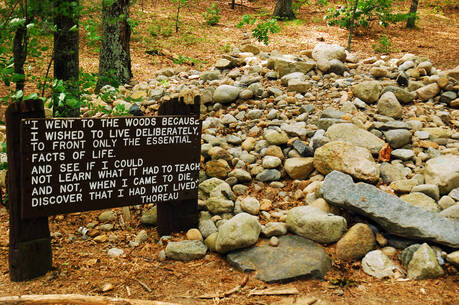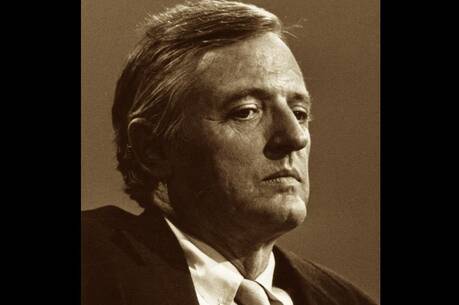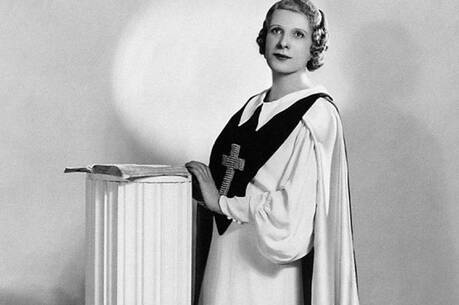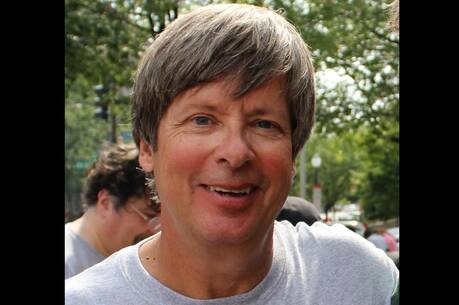Let's Look at the Record'
Empire Statesman begins, appropriately enough, by evoking the 1928 September night when a flaming cross greeted Alfred E. Smith, then governor of New York, as his presidential campaign train entered Oklahoma. When Smith is remembered today, if at all, it is for the virulent nativist outburst encountered by the first Roman Catholic to receive a major party’s presidential nomination.
This story can be found in many places. Less well known is the fascinating career that brought Smith to the 1928 Democratic Convention. It is in recalling that career that this biography by Chapman University professor Robert A. Slayton shines.
Smith, who grew up in Manhattan’s ethnically diverse, working-class Fourth Ward, dropped out of grade school when his father died, taking a full-time job at the Fulton Fish Market to help support his family. Today this kind of early life would render a political career unlikely, but the urban political machines of the era propelled many such men of humble backgrounds into political leadership. In 1904 local bosses tapped the garrulous Smithwith his background in community theater, he was the consummate performerfor the State Assembly.
Assemblymen were the most minor players in the political machine, held in substantially less awe or esteem than a good precinct captain; in the Tammany scheme they were nothing more than flunkies who were supposed to vote when and how they were ordered. Smith, though he remained loyal to the political machine that lifted him up, soon proved to be cut from different stuff than the average Tammany hack. Possessed of a remarkably sharp mind and near-total recall of facts and figures, he taught himself the intricacies of the legislative process and emerged as one of the giants of New York politics. Through his legislative service, a brief stint as Assembly speaker and finally during four terms as governor, he was the premier political reformer in the New York of his day. Initiatives ranging from workman’s compensation insurance and wage and hour laws to municipal utilities and public parks and open spaces would bear Smith’s fingerprints.
Moreover, Smith was a special kind of reformer. His career coincided with the booming Catholic and Jewish immigration from southern and eastern Europe that filled American cities in the early decades of the 20th century. Al Smith emerged as their champion, one of their own risen from The Sidewalks of New York to the governor’s mansion. These were the people Smith aimed to protect and defend with his efforts; and during a period when nativist sentiment against the New Immigrants was cresting, Smith was a tireless defender of their claim to equal rights as Americans.
Slayton’s admirably thorough study of Smith’s electoral politics reveals another interesting aspect of his career. Today, when conflicts between Catholics and Jews are the focus of so much scholarly attention, the remarkable affection between Smith and New York’s Jewish community is of particular interest. New York Jews, customarily repelled by Tammany, embraced the governor in overwhelming majorities. The happy warrior who fought nativist prejudice and tenement sweatshops fought for them as much as for the Italians or his fellow Irish.
It was perhaps Smith’s finest hour when in 1924, he assaulted the resurgent Ku Klux Klan, then at the height of its influence, in reaction to the massive immigration. Characterizing the Klan as out of line with the spirit of our free institutions, he went on to say of that organization’s hate-mongering, The Catholics of the country can stand it; the Jews can stand it; our citizens born under foreign skies can stand it; the Negro can stand it; but the United States of America cannot stand it.
Smith’s stature as the popular governor of the nation’s largest state propelled him to the Democratic presidential nomination in 1928, and thence to historic political catastrophe. Though he polled strongly in the major industrial cities, Smith faced huge losses of traditionally Democratic votes in rural areas and the South. Those who denounced Smith as a wet who sought to end Prohibition often employed coded language for the real problemthe Catholic issue. But his opponents were not always so subtle. High-toned journals like The Christian Century questioned whether America could afford a devotee of a medieval Latin mentality, of an undemocratic hierarchy, and of a foreign potentate in the White House. Klan publications targeted the more gullible with promises that a home in Georgetown had already been prepared for the pope in the event Smith was elected. When Herbert Hoover coasted to victory, capturing even Smith’s home state, many Americans must have breathed easier.
Slayton’s account of Smith’s admittedly odd behavior following the 1928 defeat is less satisfying. Smith’s handpicked successor to the New York governor’s mansion, Franklin D. Roosevelt, ascended to the White House in 1932. But Smith emerged as one of Roosevelt’s principal antagonists, first challenging him for the Democratic nomination and then aligning himself with the wealthy and conservative Liberty League to wage war on the New Deal.
Slayton’s explanation forms the book’s narrative arc. The author contends that Smith nurtured from his youth a naïve and almost childlike faith in both American democratic ideals and the American people. That faith was shattered by the widespread religious bigotry he experienced in the heartland, but, a born politician, he was unwilling to blame the populace. Thus, Al Smith’s break with Franklin Roosevelt was caused, above all else, by the simple fact that FDR became Smith’s symbolic scapegoat for heartbreak.
It cannot be denied that the self-made man who rose from the Fulton Fish Market had great difficulty respecting his patrician successor, and that Smith envied Roosevelt’s good fortune in 1932. But a touch of condescension (mercifully absent from the rest of the book) surfaces in Slayton’s explanation of the feud. Smith, the fragile innocent (!), lashes out irrationally at Roosevelt and the New Deal because of his own rejection by the American people in 1928. Explaining the schism primarily as Smith’s personal psychodrama means that author and reader may safely disregard Smith’s expressed critique of Roosevelt’s politics.
Smith actually offered two substantive criticisms of the New Deal that Slayton virtually dismisses out of hand. In a familiar strain of conservative criticism, Smith attacked Roosevelt and his brains trust for making the administration a tool for intellectuals’ social experiments. But familiar and conservative does not mean inconsequential, and the subsequent career of liberal reform in the 1960’s and 1970’s calls for a more respectful assessment of Smith’s point of view.
More seriously, Smith indicted Roosevelt for initiating a politics of class warfare. Progressives may well regard this argument as naïve, but Smith had an appreciation for the mechanics of American democracy and the realities of class matched by few of his critics. He also seemed to understand that an appeal to the common good, fair play and other universally applicable principles was in many ways a better basis for democratic discourse than was a rhetoric of class conflict. Probably no one could have prevented American politics from slipping into a class war during the Depression, and Smith certainly deserves brickbats for enlisting on the wrong side when it happened. But at least he seemed to notice that something was being lost.
This article also appeared in print, under the headline “Let's Look at the Record',” in the October 22, 2001, issue.








